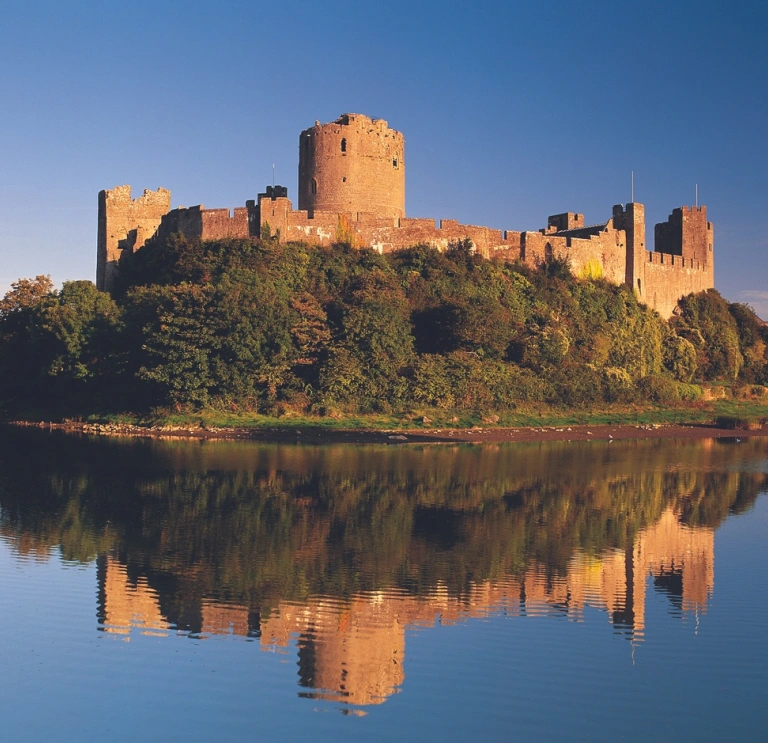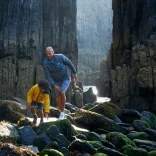Pan Wales Rural Tourism Development
Four funding schemes were delivered via Pan Wales Rural Tourism over a four-year period between 2017/18 and 2020/21:
- Micro and Small Business Fund (MSBF): a capital fund of between £25,000 and £500,000 for private and third sector enterprises and which could support up to 40% of eligible costs.
- Tourism Amenity Investment Scheme (TAIS): a capital fund of between £25,000 and £128,000 available to public and not for profit organisations to fund small-scale tourism infrastructure improvements and which could support up to 80% of eligible costs
- Tourism Product Innovation Fund (TPIF): a revenue fund of between £30,000 and £150,000 to support joint working between tourism partners in the public, private and third sectors and which could support up to 90% of eligible costs.
- Regional Tourism Engagement Fund (RTEF): a revenue fund of between £30,000 and £150,000, open to any organisation who would lead a collaborative proposal to promote and develop high-quality visitor destinations and which could support up to 90% of eligible costs.
The aim of the evaluation was to review the four tourism schemes and provide an independent assessment of scheme implementation and delivery, including the outcomes and impact of the schemes.
A total of 140 projects were funded across the four grant schemes between 2017/18 and 2020/21: 50 were MSBF projects, 43 were TAIS projects, 25 were RTEF projects and 22 were TPIF projects. In total, £13.1 million grant funding was awarded to these projects. The total value of the funded projects’ costs amounted to £28 million, with £15 million provided in match funding.
In addition to the £13.1 million project level grant funding, a further £5.6 million, via the RTEF and TPIF schemes, was made available to fund four Visit Wales ‘Year of’ thematic campaigns.
OB3 Research evaluated the Pan Wales Rural Tourism on behalf of Visit Wales, in reviewing the four schemes mentioned above the evaluation considered factors like policy alignment, scheme management, project achievement, industry responsiveness, and value for money. It involved reviewing documents, interviewing Welsh Government officials, surveying grant recipients, conducting in-depth interviews with funded projects, and interviewing key stakeholders. It was conducted between September 2022 and July 2023 and involved two reports.
A sample of the findings in the full report is below:
- a wide geographical range of projects were supported, and it was logical that north Wales accounted for a higher proportion of projects and funding compared to other regions due to the high number of local authorities which accessed TAIS funding and the importance of tourism across this region
- performance against scheme-level targets was very mixed, with cases of significant over and under-achievement alike despite some targets being revised downwards; some targets were set at too low a level and others were not achieved because of external factors such as the pandemic; it is difficult to offer a view on how well the schemes performed against their funded targets, as the targets set were not realistic
- in terms of cross-cutting themes there was good evidence that funded projects contributed positively towards innovation, equality of opportunity, sustainable development, addressing climate change and the Welsh language; there was less evidence that funded projects contributed towards tackling poverty and social exclusion in rural areas
- the four funding schemes were well received by the tourism sector and a key strength was the co-ordinated approach to investment and addressing funding gaps
- the cost per job created or safeguarded was higher than anticipated (£13,468 compared to the target of £10,000 per job created or safeguarded)
- grant funding of £4.5 million contributed to a turnover growth of circa £12.7 million per annum across supported businesses
- value for money would have been higher had the pandemic not impacted negatively upon business performance
Tourism Attractor Destinations
Since Wales first became eligible for European Structural Funds in 2000, Visit Wales and its predecessor bodies have led a series of strategic EU-funded programmes to help focus capital investment to develop tourism quality, products and destinations in support of Wales’ wider economic, regeneration and environmental objectives. TAD is arguably the most ambitious of these initiatives in terms of its scale and aims, with its emphasis on supporting iconic destinations capable of achieving transformational change for the Welsh visitor economy and delivering an increase in visitor numbers to funded projects.
TAD’s objective is to deliver economically significant investment in key tourism assets that will attract further business investment and business growth to deliver key outcomes in terms of employment and regeneration.
TAD projects were identified and selected through a regional prioritisation exercise, involving regional economic boards and key delivery partners, who subsequently became joint beneficiaries. At the time of preparing this interim report, three projects have completed in full and one has partially completed and has reported on outputs.
The TAD operation includes total project costs of £62.2m, of which £27.7m is ERDF programme funding with a further £9.7m awarded in targeted match funding (TMF). By May 2019, claims of £9.9m had been made in respect of ERDF funding and £7.7m of TMF. In addition to ERDF and TMF, TAD projects have secured funding from a range of other sources, totalling over £24m.
A final report has not yet been published, however interim findings show:
- There is support for the programme’s rationale and its aspiration to develop high-profile destinations and attractions across Wales.
- Visit Wales has provided effective management of the programme to date.
- Effective systems and processes for managing the programme have been developed and improved.
- There is early evidence of Tourism Attractor Destinations (TAD) contribution in terms of accommodating and creating employment.
- There is relatively little awareness of TAD beyond those who have been directly involved in its delivery.
- The TAD project network group could be more dynamic in terms of facilitating knowledge exchange and good practice amongst partners.
- The ERDF cross-cutting themes (CCTs) are embedded as part of the intervention, however at an individual project level the CCTs and Welsh language could be promoted and publicised more actively.
- There is scope to improve linkages with other local and regional activities and programmes.


